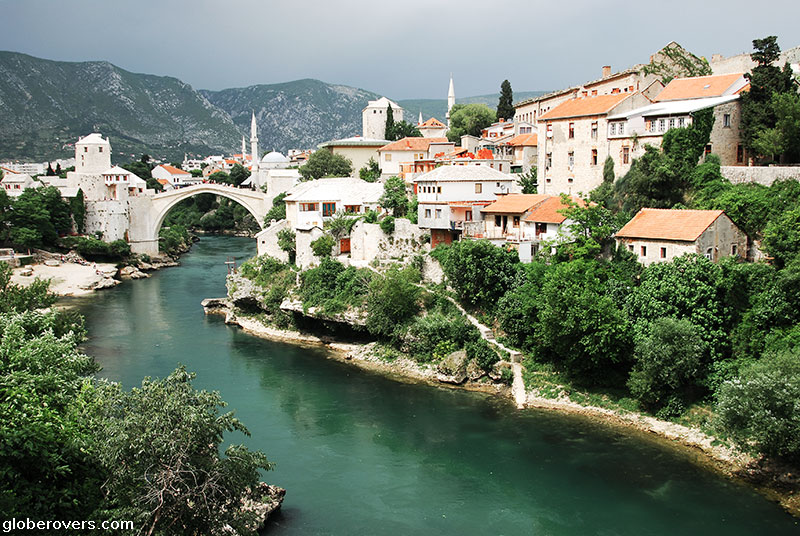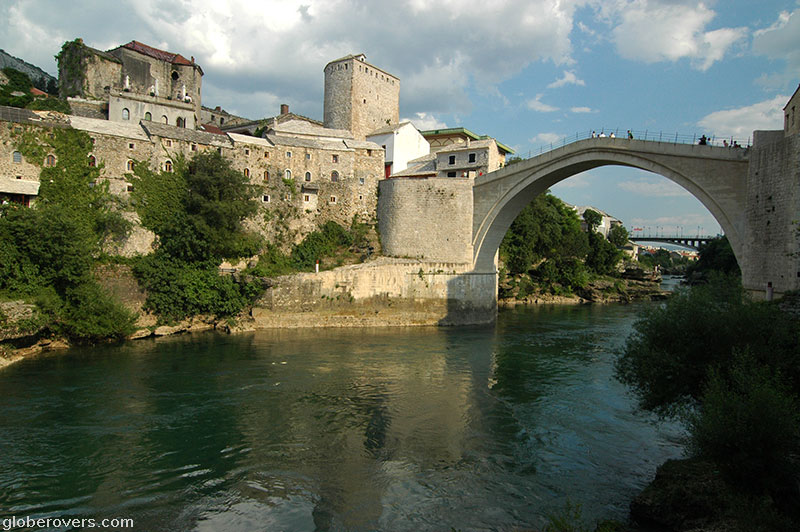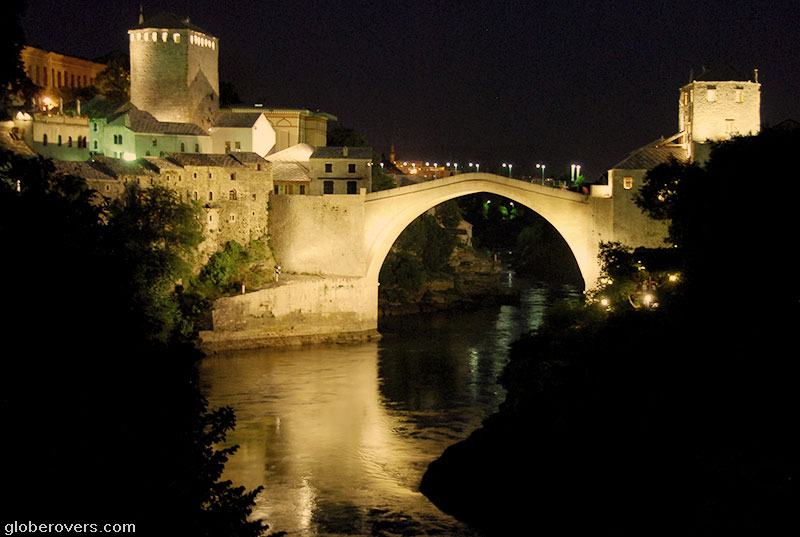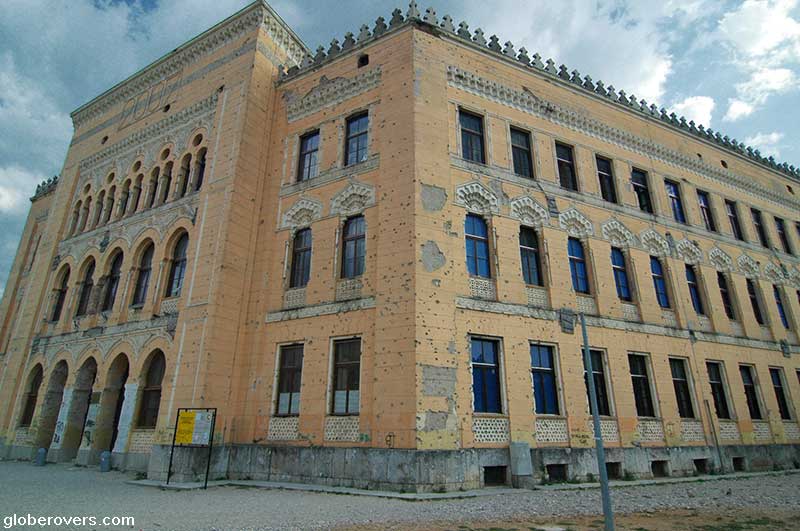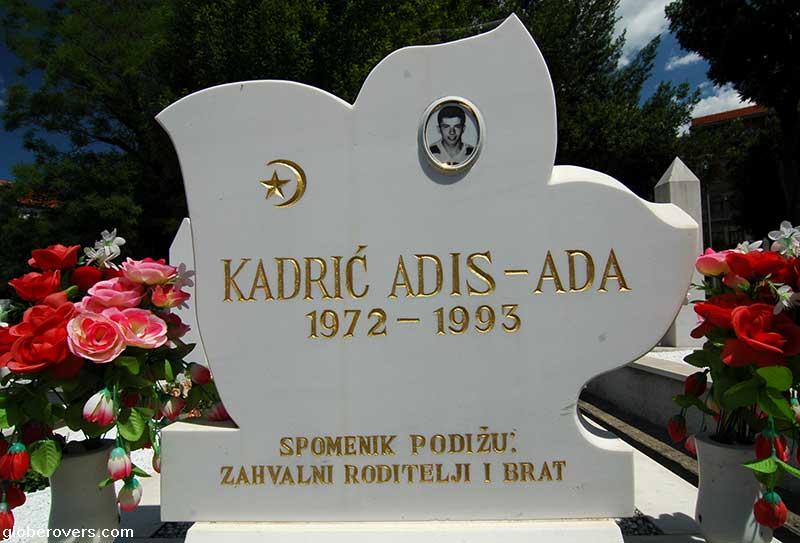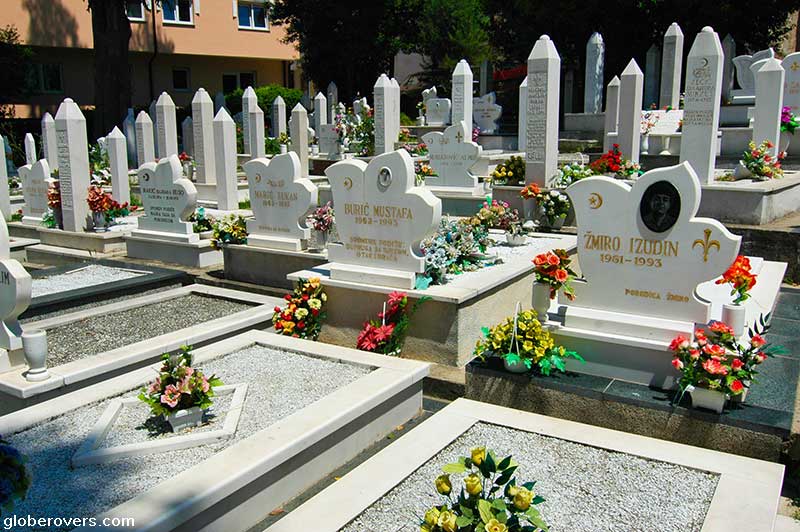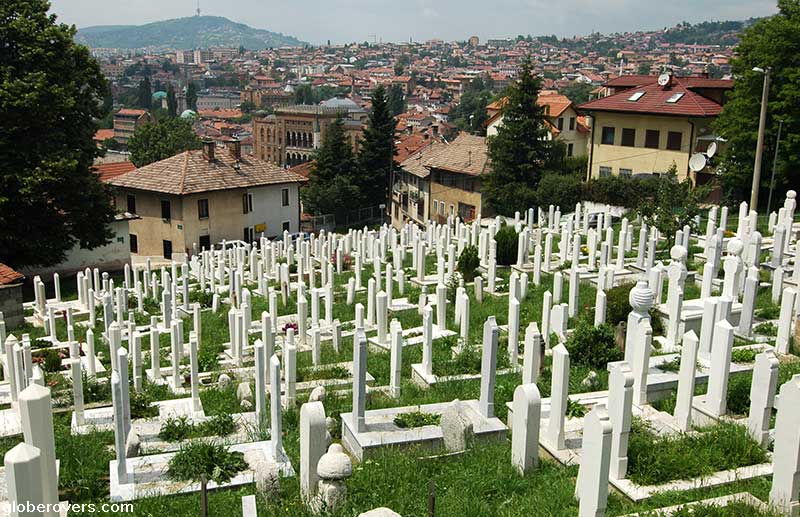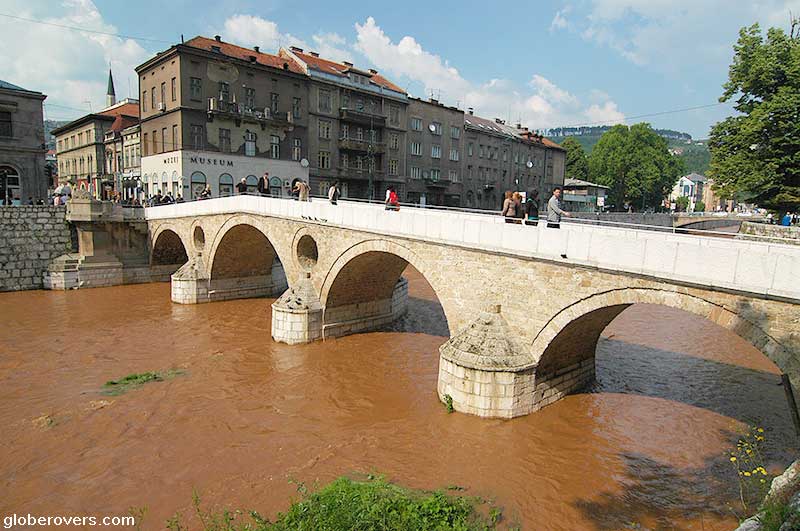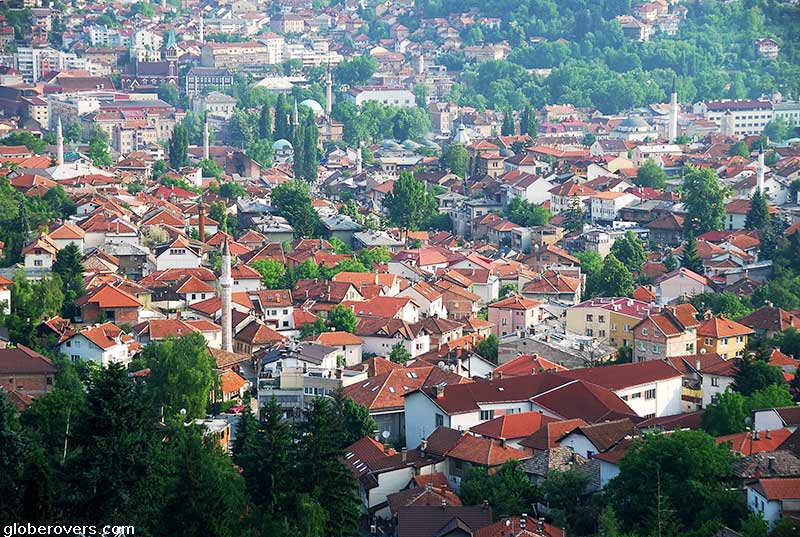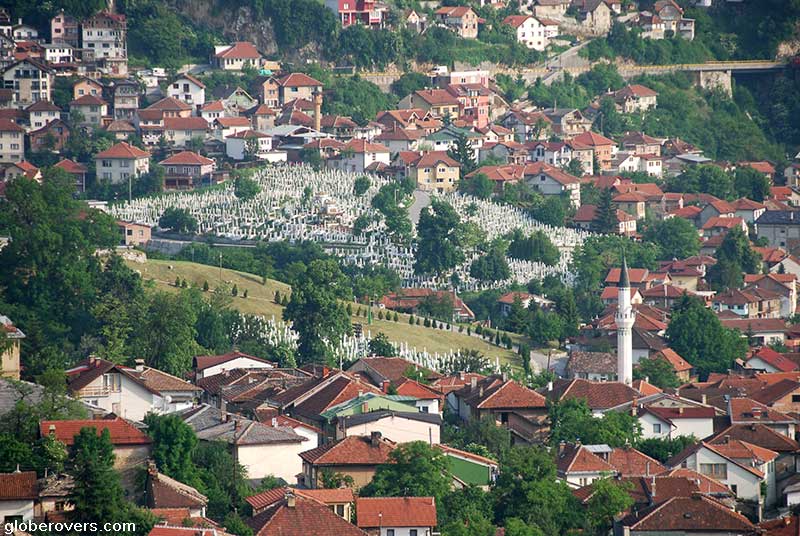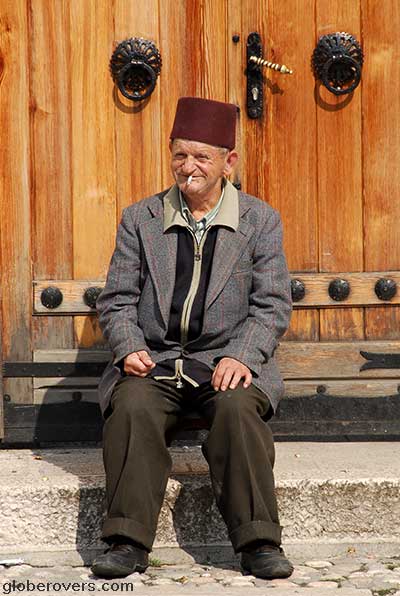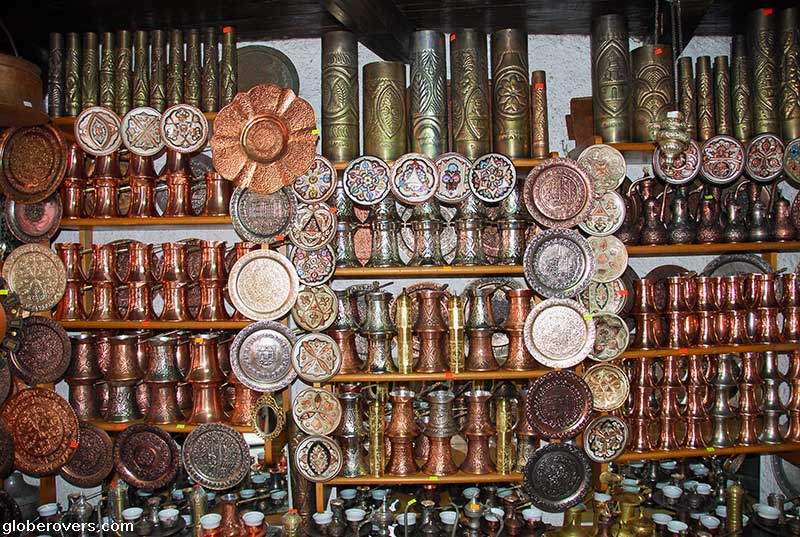
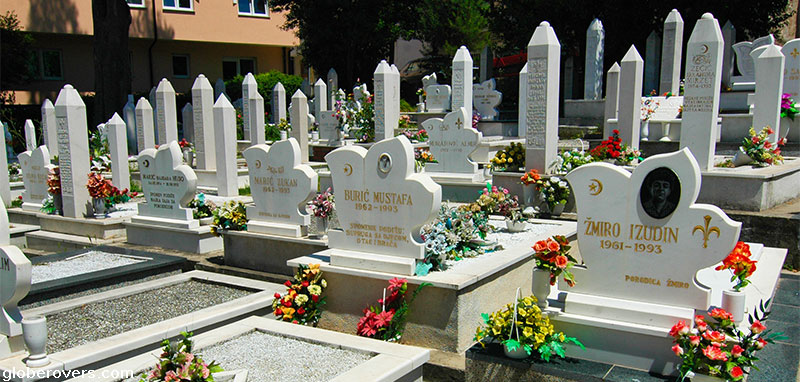
Sarajevo is known for the place that sparked World War 1 with the assassination of Archduke Franz Ferdinand of Austria at the Latin Bridge. Sarajevo is sadly also remembered as one of the burning points of the Bosnian War of the early 1990s which left unforgettable scars on the town’s modern history.
Both Sarajevo and Mostar suffered heavy losses in human life. In total, over 101,000 people died. The many white graves dated between 1992 and 1995 will stand testament to this war for many years to come.
The Bosnian War took place in Bosnia & Herzegovina between 1992 and 1995 with over 100,000 fatalities
More than 20 years after the end of the Bosnian War, there are still some buildings that remain in disrepair and bullet holes can be seen. Now peaceful, these towns and their surrounding rolling hills and valleys have a special charm not to be missed.
The surrounding areas of both Mostar and Sarajevo are beautiful, in particular the train ride all the way from Čapljina (at the border with Croatia near the Adriatic Coast) to Mostar and on to Sarajevo, a total distance of 163 km (101 mi). Trains no longer extend to Ploče (Croatia) on the Adriatic Coast.


The scenic 129 km (80 mi) section between Mostar and Sarajevo was closed for rebuilding from October 2015 to June 2017, but is now open again. It is served by impressive air-conditioned Spanish-designed Talgo trains that replaced the ancient communist-era carriages.
A 10-hour overnight train from Zagreb (Croatia) goes through Sarajevo, then arrives a few hours later in Mostar and terminates in Čapljina. To get from Čapljina to Ploče in Croatia by the sea, take a 1-hour bus ride.
Sarajevo can also be reached by train from Budapest (Hungary) and Belgrade (Serbia).

Stari Most bridge, Mostar 
Stari Most bridge, Mostar 
Stari Most bridge, Mostar 
Buildings along the Neretva River in Mostar 
Formerly called “Gimnazija Aleksa Šantić” in honour of a poet, it is now referred to as “Stara gimnazija” (Old Gymnasium) and has been beautifully restored after being severely damaged (shown in this 2007 photo) during the Bosnian War 
War-damaged building in Mostar 
Grave of a young man who died in the Bosnian War, Sarajevo 
Bosnian War graveyard in Sarajevo 
Bosnian War graveyard in Sarajevo 
Sarajevo’s Latin Bridge where Archduke Franz Ferdinand of Austria was
assassination on June 28, 1914 which started World War I
From a nearby hill Sarajevo looks peaceful. Hard to think that so many
people died here just about 20 years ago
Graveyard in Sarajevo 
Cevapcici and Ayran yogurt drink, Sarajevo

Stari Most bridge, Mostar 
Sitting in the morning sun at Bascarsija market (Turkish Area), Sarajevo 
Market of Bascarsija (Turkish Area), Sarajevo

St. Mark’s Serbian Orthodox Church, Sarajevo 
St. Mark’s Serbian Orthodox Church, Sarajevo
☛ Read more: Posts about Eastern Europe



Blog post and photos by Peter who has been travelling almost full-time since 2005 and has been to over 122 countries. He visited several countries, such as Japan, more than 20 times. Peter is Editor-in-Chief and Publisher of GlobeRovers Magazine, an independent travel magazine focused on intrepid destinations.

